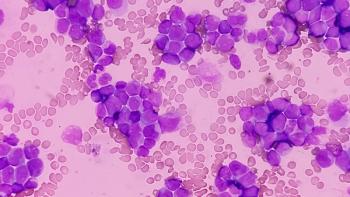
Reducing Hazardous Exposures in Surgical Staff With Smoke-Free ORs

Converting operating rooms into those that are able to filter surgical smoke and biological contaminants can make workplaces safer for nurses and other health care staff.
The implementation of smoke-free operating rooms (ORs) at hospitals may prevent nurses and other clinical staff from exposure to biological contaminants and other hazardous chemicals.
In particular, smoke-free ORs aim to reduce or remove the surgical smoke or plume that can be exposed in the operating room to surgeons and their staff during procedures. This can include biological contaminants like aerosolized blood and carcinogenic cells, among other materials.
Allegheny Health Network, located in western Pennsylvania, has put a focus on converting their ORs to be smoke free, which typically poses a hazard to nurses and other staff during procedures.
“The average impact to a team in the operating room is anywhere between 27 and 30 unfiltered cigarettes, given how much surgical smoke is in the air,” Ann Miller-Burke, DNP, RN, CPPS, Vice President of Perioperative Services for Allegheny Health Network, said in an interview with Oncology Nursing News. “That's biological contamination, there's carcinogenic cells. They have found up to 150 hazardous chemicals in that surgical smoke that the OR team is breathing in throughout the cases.”
This smoke can be a result of any type of electric cautery devices used on tissue.
“When we do surgery, we use electrical devices primarily either for cauterization or tissue ablation,” Sara Angelilli, DNP, MS, RN, CNOR, NPD-BC, Director of Education and Professional Practice for perioperative services for Allegheny Health Network, said in the interview. “The process of applying heat to that tissue and the vaporization of the tissue is what releases both the cells that could potentially be harmful to staff and those chemicals into the air.”
One of the major components of making an OR smoke free is evacuation units.
“There are specific units that has to have a 0.1-micron output filter, which is the gold standard when you're evacuating the smoke, to be able to siphon it into the machine,” said Kimberly Saluga, MSN, RN, CNOR, manager of the OR and GI lab at Allegheny Health Network.
She added that smoke-free ORs are also equipped with smoke-free Bovie pencils, which are able to take smoke away at the incision site and filter it through a machine.
Saluga added that just smelling smoke in the OR exposes the staff to its toxins.
“The saying is, if you can smell it, you're exposed to it. A lot of the reading I was doing is, a lot of people thought it was just the surgeon and the surgical tech at the field that were the main people that were affected by the plume, but actually the circulator [nurses] are as well and the [certified registered nurse anesthetists].
Miller-Burke said currently there is legislation in 15 states to make all ORs smoke free, although Pennsylvania—where Allegheny Health Network is located—is not one of those; it is on the board for consideration in 2025.
Miller-Burke explained, “Allegheny Health Network is working ahead of that curve, and we know it's coming. But we want to be proactive about it to keep our staff safe.”
The idea of making hospitals within the Allegheny Health Network was mainly driven by the staff who read about smoke-free ORs, said Jared Gamble, MSN RN CNOR, perioperative director at Jefferson Hospital of Allegheny Health Network, who worked on this project along with Saluga.
“[Saluga] went on board, started looking at the equipment, and getting them across the board,” Gambale said. “Sometimes when we didn't have that equipment in the room, the doctors would come at us and [ask], ‘Hey, where's the smokeless OR that I’m doing my case in?’ So it was driven by the staff. We take care of our patients; why can't we take care of ourselves and our staff?”
Saluga echoed that sentiment by saying that nurses never truly advocate enough for themselves.
“We always are advocating and looking out for the patients that we care for,” Saluga said. “…It's been known for a while the harmful effects of surgical smoke and plume. And for a while we were complacent, doing our jobs, and not really considering the adverse effects of that. It's time for the nurses to stand up and speak for a better working environment for themselves.”
For the nurses interested in suggesting smoke-free ORs at their institution, the team urges them to engage the leadership as well as their managers.
“You would certainly hope so at this day and age, but maybe their leadership isn't aware of the dangers,” Miller-Burke said. “There's so many resources out there to help any group that's interested in their journey towards becoming smoke free.”
Amanda Boleky, BSN, RN, CNOR, director of perioperative services at Wexford Hospital of Allegheny Health Network, commented on her experience of implementing smoke-free ORs at her center.
“One of the biggest things that we have found is how easy it has been to implement,” she said. “I don't know if every other hospital has felt this way. But for such a beneficial initiative, it's been so easy to implement, to get staff and surgeons to be compliant and want to utilize the equipment or the different Bovie cautery pencils that are provided, try out different methods, so they can ensure that they are keeping the OR safe.”
In addition to its easy implementation, Heather Myers, MSN, RN, director of perioperative services at Allegheny General Hospital, noted how so many people want to be a part of this project.
“I've never proposed a project where I've had people fight to own it and work on it,” she said. “This is actually a project that whenever you say who wants to own this, who wants to champion it, you get so many hands up in the air, because they're so passionate about it, understanding the health and wellness that is designed in decision making and supporting them. Everybody wants to jump on board and be part of—if not own—the project.”
Newsletter
Knowledge is power. Don’t miss the most recent breakthroughs in cancer care.
















































































